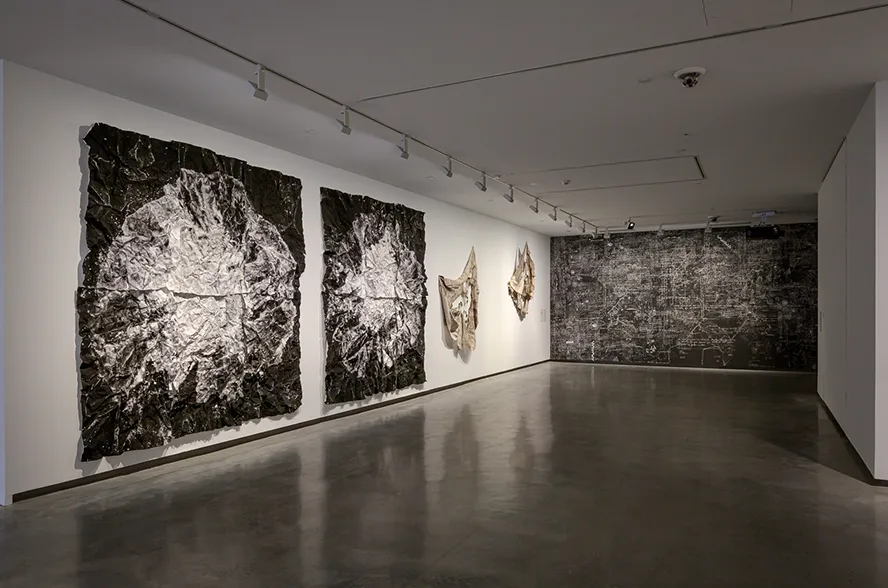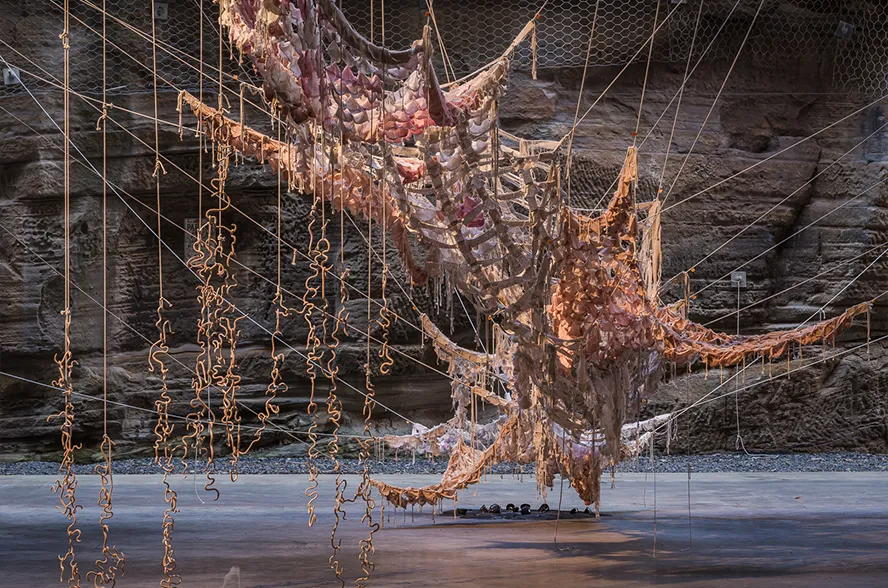23ª Bienal de Sídney (2022)
My participation in the 23rd Biennale of Sydney was articulated through two installations: Kamanchaka and La Caverna (The Cavern). Both emerged from a long process of observation and collaboration around soil, water, and invisible life cycles.
Leer más...
Kamanchaka, installed at The Cutaway, explored materials evoking the invisible water in the air—the moisture that condenses in the fog along the coastal edge of the Atacama Desert—and the living soil shaped by the silent movement of earthworms. Inspired by fog catchers and natural subterranean architecture, the work combined a textile net for moisture collection, a suspended arrangement of ceramic worms, and a black ceramic basin made of melting vessels. This last element is, for me, a contained paradox: a form that empties as it contains, a structure without beginning or end.
Thinking through ceramics allowed me to connect the internal with the external, the bodily with the environmental, the archaic with the urgency of today’s water crisis. As I proposed in the A Simple Form workshop at The Waterhouse—part of the Biennale’s educational program—working with clay is also working with the memory of minimal gestures and the intuition of the fingertips. I invited participants to make worms using the most basic gesture in pottery: the lulo (coil). This simple form became the starting point for collectively building a symbolic, symbiotic system of cooperation.
La Caverna (The Cavern), presented at the Museum of Contemporary Art (MCA), explored soil as archive and humus as a medium of transformation. Inspired by Paracas funerary bundles, I conducted an experimental ritual: planting cherry trees in textile pots, photographing them, inverting the images, and then burying them. The resulting prints, installed as constellations, seemed to capture hidden underground universes. The installation was completed with enlarged annotations from my notebooks—thoughts, sketches, questions—that formed a weave between word and image, concept and organism. The video Humus closed the space, documenting processes of transformation between matter, art, and nature.
Both projects occupy a blurred space between the visible and the invisible, the material and the symbolic. The Biennale became an opportunity to share a way of working that begins with the sensitive, the minimal, the seemingly fragile—offering new ways of inhabiting the world.
Finally, I was invited to contribute to the Biennale’s collective publication A Glossary of Water, writing the entry “Kamanchaka” from my artistic experience. I was interested in thinking of that fog not as a metaphor for confusion, but as a way of revealing what is present, even if it cannot be immediately seen.

